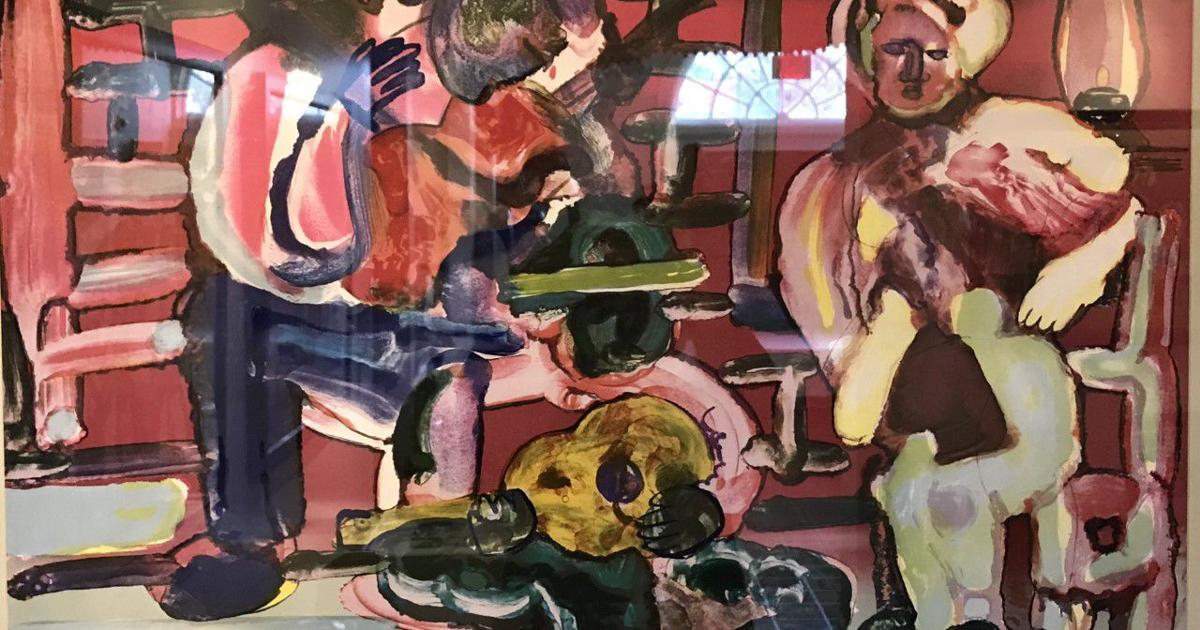Maka Panau / Tinea Vesicolor
2005 - Painting (Painting)
Shooshie Sulaiman
Shooshie Sulaiman’s pictures of unidentified figures initially appear alien and even monstrous: rendered hairless in unusual and even sickly colors, they stand in stark contrast to the aesthetic ideals of conventional portraiture. The green acrylic paint used for the subject’s skin in Maka Panau / Tinea Vesicolor (2005), for example, evokes cultural associations between phenotype and diseases such as hypochromic anemia, a blood-related illness historically diagnosed by the green-hued tone it produced in a patient’s pallor. Staring at the viewer a forlorn gaze, Sulaiman’s subject appears caught in a distressingly static state, at once both uncomfortable and yet incapable of ameliorating his condition. Sulaiman’s paintings, on many levels, foreground bodies as vulnerable sites: in Maka Panau / Tinea Vesicolor (2005), the visual cues for disease also bring out associations of dirtiness and shame as read through “observable” symptoms. At the same time, her work also responds to contemporary practices that privilege branding and commerce over creative originality. Sulaiman’s work effectively translates psychological anxieties endemic to nation building traumas in contemporary Malaysia, the result of a nascent free market economy and its social effects. Her commitment to analog technique represents a decisive injunction against the mass-produced that gestures towards freer expressiveness through artistic practice.
Shooshie Sulaiman is one of the leading creative practitioners in Southeast Asia. Her work develops in various forms, from site-specific installations and outdoor performances, to a daily practice of writing and drawing. She started her artistic practice during the 1990’s, when Malaysia opened to the free market and became more international, not without psychological impact on its society. Thus, her work can be perceived as a precious testimony of what the country went through, an emotional landscape of what happened politically and socially during that time.
Colors:
Other related works, blended automatically
» see more

© » KADIST
Shooshie Sulaiman
2005Shooshie Sulaiman’s pictures of unidentified figures initially appear alien and even monstrous: rendered hairless in unusual and even sickly colors, they stand in stark contrast to the aesthetic ideals of conventional portraiture...
Related works sharing similar palette
» see more

© » KADIST
Things Entangling Edited by Che Kyongfa and Elodie Royer Designed by Toshimasa Kimura Published by Museum of Contemporary Art Tokyo (MOT) and KADIST The publication is available in pdf — see links on the right side of this page Things Entangling was published on the occasion of the eponymous collective exhibition presented at MOT, Tokyo from June 9 to September 27, 2020, the culmination of a long-term curatorial collaboration between MOT and KADIST...
Other works by: » Shooshie Sulaiman
» see more

© » KADIST
Shooshie Sulaiman
2005Shooshie Sulaiman’s pictures of unidentified figures initially appear alien and even monstrous: rendered hairless in unusual and even sickly colors, they stand in stark contrast to the aesthetic ideals of conventional portraiture...
Related works found in the same semantic group
» see more

© » KADIST
Didem Pekün
2018The black-and-white projection, Araf by Didem Pekün, begins, as a lithe man stands high up in the middle of the grand, rebuilt 16th-century Ottoman bridge in Mostar, in Bosnia and Herzegovina...

© » KADIST
Polina Kanis
2011In the seminal video Workout , Kanis looks at the phenomenon of exercise in public space—specifically aerobics exercises in parks around Moscow today—as a broader lens for thinking about generational change...





